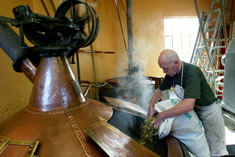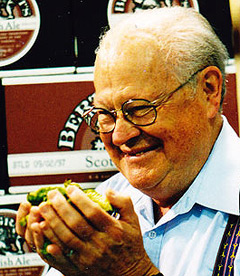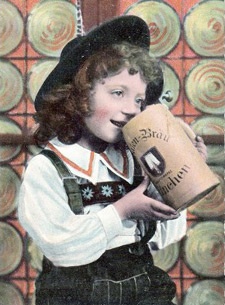Boulevard Brewing in Kansas City released this video to promote Smokestack Saison Brett, its Brettanomyces-spiked delight that is headed for store shelves this week. I draw your attention to it for two reasons:
1) Steven Pauwels talks about the aroma and flavors you’ll find in the beer right now, but also those that emerge as it ages. If you want more funk, he says, let it sit. I think we might have to open a 2011 bottle tonight.
2) Just yesterday, The New York Times suggested saisons might be the perfect summer beer. This inspired a riff from Alan McLeod (“Is It Really Pronounced say-ZOHNS?”) you should take the time to read. And the author suggested five beers to try, including Saison Brett.
However, if you want Saison Brettdo not hesitate. It is released but once a year, and ne’re do wells like myself tend to grab an extra bottle or two from the shelf to stick in the cellar, you know, just like Mr. Pauwels suggests. So one more tip, in case you don’t see any Saison Brett. Tank 7 Farmhouse Ale, which Pauwels also mentions, is much easier to find (there are joints around me where it is always on tap), and is an excellent alternative.
Bonus material
Here’s what Pauwels had to say about Saison Brett a few years ago, when I wrote about it in Adrian-Tierney Jones’ “1001 Beers You Must Taste Before You Die”:
“The inspiration came from some of the great Belgian saisons and also from my childhood when I grew up on a farm in Belgium. We would help out farmers during hay harvest. The dusty smell of hay when we were loading it on the field and the barn smell when we were unloading it are completely different but very unique. The beer doesn’t smell like these memories but I tried to get the fresh hay smell through dry hopping and the barn smell with the Brett.”

 UK hop merchant
UK hop merchant  Glenn Humphries at beer is your friend has announced the topic for
Glenn Humphries at beer is your friend has announced the topic for  Why would a German beer drinker pay the equivalent of $4.20 for a 12-ounce bottle of Brooklyn Lager? It’s an excellent beer, but that’s quite a markup over what it costs in the United States and considerably more than Germans pay from any of several outstanding beers.
Why would a German beer drinker pay the equivalent of $4.20 for a 12-ounce bottle of Brooklyn Lager? It’s an excellent beer, but that’s quite a markup over what it costs in the United States and considerably more than Germans pay from any of several outstanding beers.